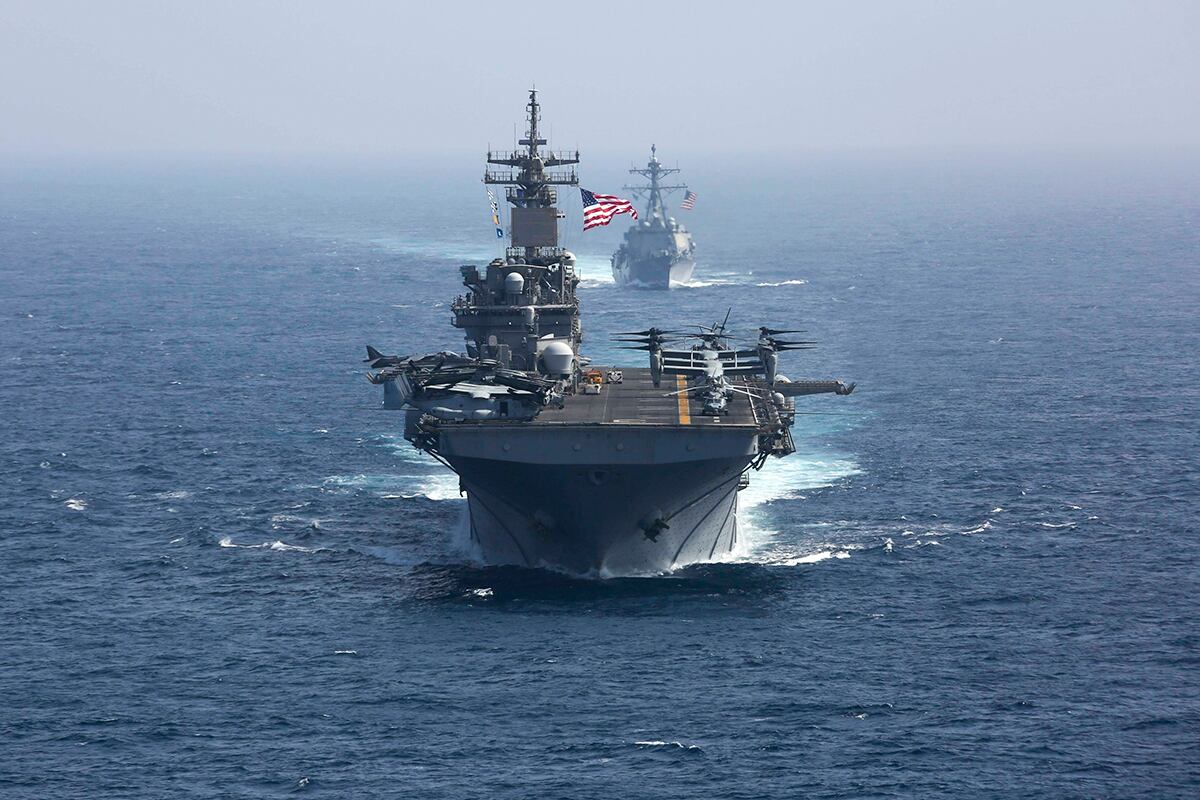The Corps has held steadfast for nearly a decade on its requirement for 38 amphibious ships to haul Marines and gear to the fight — now the new top Marine says that’s no longer the case.
Commandant of the Marine Corps Gen. David Berger dropped that requirement, noting that Marines storming a beachhead from an armada parked nine nautical miles offshore in the South China Sea was “impractical and unreasonable.”
Berger’s remarks on the amphib ship requirement were made in a planning guidance document he posted late Tuesday evening.
“We must accept the realities created by the proliferation of precision long-range fires, mines, and other smart-weapons, and seek innovative ways to overcome those threat capabilities,” Berger wrote.
That doesn’t mean Marines won’t be storming beaches or capturing enemy airfields and territory, but the Corps will need to work out smarter solutions to how it engages in a fight with more capable adversaries.
A new ongoing force structure assessment would help inform the Corps on the “adequate numbers of the right types of ships," Berger said.
The Corps, he said, would look at a number “different approaches” from long range unmanned systems that can move 200 nautical miles and “create dilemmas” to mine countermeasures.
The number and availability of amphibs has been a contentious issue for the Corps over the years, especially as the Corps has been pushing further naval integration and Marine Expeditionary Force, or MEF, level warfare.
The March Pacific Blitz exercise off the coast of California pitted nearly 5,000 Marines and sailors against a near-peer competitor in the Pacific Ocean and involved at least four Navy ships.
It was an example of the kinds of large scale amphibious operations the Corps is trying to train for as the force moves beyond counterinsurgency conflicts — but the availability of amphib ships has been a problem.
A 2017 Government Accountability Office blasted the Navy for not fulfilling most of the Corps’ requests for amphibious ships for training.
Chief of Naval Operations Adm. John M. Richardson and then-Marine Commandant Gen. Robert Neller just testified in April before lawmakers about the need for a 38 amphib fleet.
“We still have a requirement for 38 amphib ships, we believe 12 big decks and 26 LPD [amphibious transport dock] similar whole forms. And so we would like to get to 38 ships,” Neller told lawmakers.
But there have been other issues too, notably a maintenance backlog for amphibious ships
“I believe the Navy has a backlog and a number of platforms for maintenance. So, yes, we are concerned about the availability of these platforms,” Neller, told lawmakers April 10.
But Neller also noted there needed to be a balance of the right kinds of ships, because without attack submarines the Corps will not be able to get its forces to the beach.
“Obviously, we believe that amphibs obviously are critically important to Marines, but submarines are important to Marines too because if we don’t have submarines we’re not going to get to the fight,” Neller said in April.
The Corps is now no longer tied to the 38 amphib requirement and will be looking at a range of solutions.
“We will build one force ― optimized for naval expeditionary warfare in contested spaces, purpose-built to facilitate sea denial and assured access in support of the fleets,” Berger wrote.
Shawn Snow is the senior reporter for Marine Corps Times and a Marine Corps veteran.




